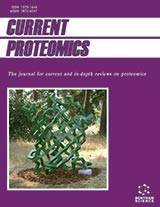Abstract
In this paper we address the acceleration of the Hermite function characterization of the heartbeat by means of massively parallel Graphics Processing Units. This characterization can be used to develop tools to help the cardiologist to study and diagnose heart disease. However, obtaining this characterization, especially when a large number of functions is used to achieve a high accuracy in heartbeat representation, is very resource intensive. This paper addresses off-line and on-line heartbeat characterization, assessing the acceleration capabilities of Graphics Processing Units for these tasks. Polynomials up to the 30th order are used in the study. The results yield that the off-line processing of long electrocardiogram recordings with a GPU can be computed up to 186 faster than a standard CPU, while real-time processing can be up to 110x faster.
Keywords: Electrocardiogram, Hermite polynomials, graphics processing unit, CUDA, arrhythmia, clustering.
Graphical Abstract
Current Bioinformatics
Title:GPU-Based Acceleration of ECG Characterization Using High-Order Hermite Polynomials
Volume: 11 Issue: 4
Author(s): Alberto Gil, David G. Márquez, Gabriel Caffarena, Ana Iriarte and Abraham Otero
Affiliation:
Keywords: Electrocardiogram, Hermite polynomials, graphics processing unit, CUDA, arrhythmia, clustering.
Abstract: In this paper we address the acceleration of the Hermite function characterization of the heartbeat by means of massively parallel Graphics Processing Units. This characterization can be used to develop tools to help the cardiologist to study and diagnose heart disease. However, obtaining this characterization, especially when a large number of functions is used to achieve a high accuracy in heartbeat representation, is very resource intensive. This paper addresses off-line and on-line heartbeat characterization, assessing the acceleration capabilities of Graphics Processing Units for these tasks. Polynomials up to the 30th order are used in the study. The results yield that the off-line processing of long electrocardiogram recordings with a GPU can be computed up to 186 faster than a standard CPU, while real-time processing can be up to 110x faster.
Export Options
About this article
Cite this article as:
Gil Alberto, Márquez G. David, Caffarena Gabriel, Iriarte Ana and Otero Abraham, GPU-Based Acceleration of ECG Characterization Using High-Order Hermite Polynomials, Current Bioinformatics 2016; 11 (4) . https://dx.doi.org/10.2174/1574893611666160212235711
| DOI https://dx.doi.org/10.2174/1574893611666160212235711 |
Print ISSN 1574-8936 |
| Publisher Name Bentham Science Publisher |
Online ISSN 2212-392X |
 33
33 3
3 1
1 1
1
- Author Guidelines
- Bentham Author Support Services (BASS)
- Graphical Abstracts
- Fabricating and Stating False Information
- Research Misconduct
- Post Publication Discussions and Corrections
- Publishing Ethics and Rectitude
- Increase Visibility of Your Article
- Archiving Policies
- Peer Review Workflow
- Order Your Article Before Print
- Promote Your Article
- Manuscript Transfer Facility
- Editorial Policies
- Allegations from Whistleblowers
Related Articles
-
Ivabradine: The Hope for a Good Treatment of Ischemic Heart Disease
Current Medicinal Chemistry N6-methyladenine RNA Modification (m<sup>6</sup>A): An Emerging Regulator of Metabolic Diseases
Current Drug Targets Severe Neutropenia in a Renal Transplant Patient Suggesting an Interaction Between Mycophenolate and Fenofibrate
Current Drug Safety Nutraceuticals and their Novel Drug Delivery System: A Boon to Human Health
Current Nutrition & Food Science Cerebrolysin and Aquaporin 4 Inhibition Improve Pathological and Motor Recovery after Ischemic Stroke
CNS & Neurological Disorders - Drug Targets Human Imprinting Anomalies in Fetal and Childhood Growth Disorders: Clinical Implications and Molecular Mechanisms
Current Pharmaceutical Design Drug and Medical Device Interactions: Stent Thrombosis and Personalizing Clopidogrel Therapy
Current Pharmacogenomics and Personalized Medicine Is There An Association Between Vitamin D and Hypertension?
Recent Patents on Cardiovascular Drug Discovery Bacterial Proteases in Disease – Role in Intracellular Survival, Evasion of Coagulation/ Fibrinolysis Innate Defenses, Toxicoses and Viral Infections
Current Pharmaceutical Design Cystatin C: An Emerging Biomarker in Cardiovascular Disease
Current Topics in Medicinal Chemistry Multicomponent Reactions for the Synthesis of Bioactive Compounds: A Review
Current Organic Synthesis Recent Updates on Biological Activities of Oxadiazoles
Mini-Reviews in Medicinal Chemistry MicroRNA Regulation and Role in Stem Cell Maintenance, Cardiac Differentiation and Hypertrophy
Current Molecular Medicine Evaluation of the Possible Contribution of Antioxidants Administration in Metabolic Syndrome
Current Pharmaceutical Design Haemostatic Activation in HIV Infected Patients Treated with Different Antiretroviral Regimens
Current HIV Research Effect of S-equol and Soy Isoflavones on Heart and Brain
Current Cardiology Reviews Metallocarboxypeptidases: Emerging Drug Targets in Biomedicine
Current Pharmaceutical Design Prophylaxis of Erectile Function After Radical Prostatectomy with Phosphodiesterase Type 5 Inhibitors
Current Pharmaceutical Design Small Heat Shock Proteins and the Endoplasmic Reticulum: Potential Attractive Therapeutic Targets?
Current Molecular Medicine Pulmonary Hypertension secondary to Left Heart Disease
Current Vascular Pharmacology

















.jpeg)








